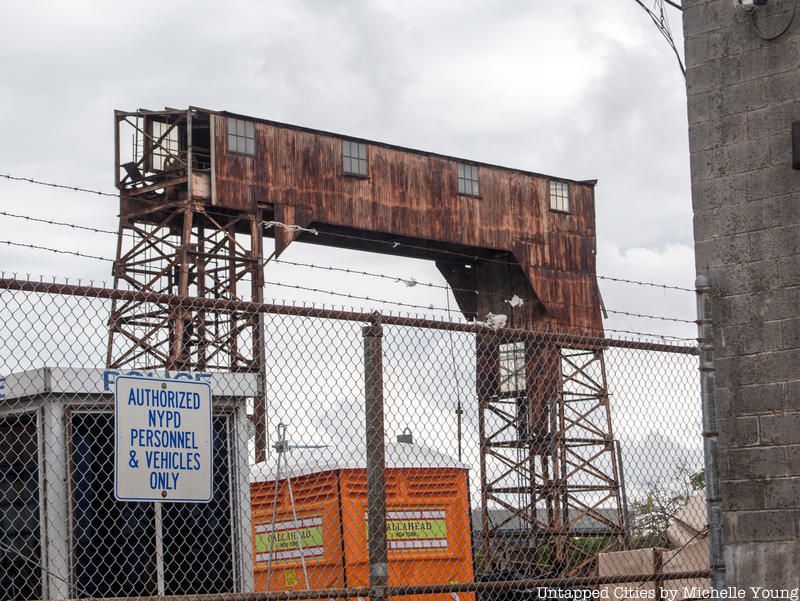Last-Minute NYC Holiday Gift Guide 🎁
We’ve created a holiday gift guide with presents for the intrepid New Yorker that should arrive just in time—


Gantry cranes, utilized as slips for ships carrying both goods and people, were used throughout the 20th century. However, due to the growth of other forms of infrastructure–whether that be highways or bridges–they sat in disrepair from the 1960s and 1970s on. In the past few years we have seen a revival in efforts to restore these engineering giants, or at least to develop the area surrounding the gantries. They have anchored the creation of parks–lush green areas as a part of Bloomberg’s development efforts–to historical zone designation leading to development projects of the gantries and surrounding areas.
The Port Morris section of the Bronx is an industrial area, historically home to an abundance of manufacturing, developing out of its proximity to some of the city’s major railroad yards. A symbol of this past industrial prowess that survive to this day–though currently in a degraded state–are those of the gantry cranes. Historically they were used in relation to unloading and loading ferries to North Brother Island and North Beach in Queens, to aid the neighborhoods manufacturing sector in both goods and manpower. This was most prominent in aid its aid to the railroad yard. Their use ended in the 1960s and have sat unused and abandoned since.

Led by the organization Friends of Brook Park–a south Bronx based community organization–development efforts have been underway for a revitalization and restoration of the gantries. The hope is to transform the area into a park with the gantries as the center piece.

69th Street Transfer Bridge today
The purpose of the 69th Street gantry, more so a floating bridge on the Hudson River, was the transfer of trains from land to water. It was built in 1911, so indeed a turn of the century relic, however, its use ended in the 1970s. The train cars would be transported from Manhattan to New Jersey, specifically Weehawken,by ferries loaded by this structure. Thirty years later, in 2003, the structure received Historical Landmark Status, and as such has remained mostly intact. It has undergone a stabilization process over the last few hours, but remains in place as reminder of the areas industrial past. For more information on the site, check out our previous article, The Abandoned 69th Street Transfer Bridge in Manhattan’s Upper West Side.

This is perhaps the most revitalized gantry on the list, with a major park surrounding it anchoring the community. Located in Long Island City, it is the focal point of Gantry State Plaza. With four piers, the park in Queens has a clear view of the NYC skyline. As such, the space has been used to host a concert series, entitled Live at the Gantries, among other events for the neighborhood. The gantries are a reminder of the neighborhood’s–Hunters Point–historic industrial use. For more on the neighborhoods history, check out A Look at Hunters Point, Long Island City: A Modern Industrial Corridor.

Isolated from the city by water, North Brother Island was entirely reliant on boats for the transportation of supplies and people until its abandonment in 1960.
On the East River’s North Brother Island sits an abandoned gantry that is in a state of disrepair, but is perhaps the best preserved without any restoration efforts on the list. This gantry received shuttle service from the Port Morris Gantry, located in the southern portion of the Bronx. North Brother Island, just 13 acres in size, was home to a now abandoned quarantine hospital. Since 1963 the site has been abandoned, and due in part to birds inhabiting the island during a portion of the year, completely off limits and patrolled. Check out these incredible photos of an abandoned North Brother Island by Abandoned NYC.
Get in touch with the author @spencercnyc
Subscribe to our newsletter